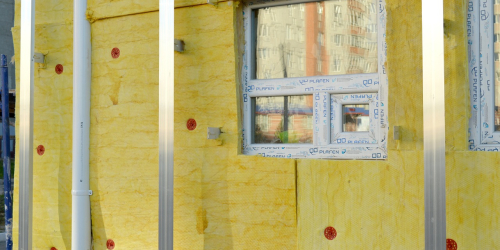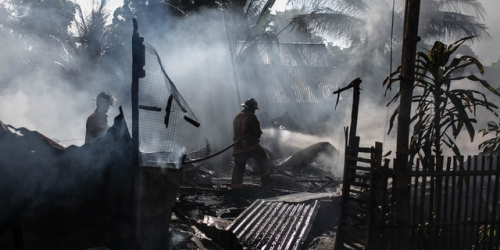

By Tasneem Osman | Wed, December 6, 23
In this blog post, we'll delve into three new NEEP resources, each dedicated to a specific facet of building performance, energy efficiency, and resilience. These resources uncover the intersection between building performance standards (BPS) and building energy codes, aimed at guiding state energy offices, policymakers, and communities. We'll highlight the crucial importance of boosting energy efficiency in existing structures and fortifying building resilience within the framework of building energy codes and BPS.
The Crucial Link Between Building Performance Standards and Energy Codes for All Buildings
Building performance standards (BPS) and building energy codes in some ways represent two sides of the building decarbonization coin. Energy codes are like the rulebook for new buildings and major retrofits or renovations to existing ones, ensuring they meet certain energy efficiency standards. BPS focus on cutting emissions from existing buildings, in some instances triggering a makeover for existing buildings. Ideally, states and jurisdictions align BPS with codes, in part to ensure that newly constructed buildings, once completed, do not find themselves out of compliance shortly thereafter with a BPS that applies to existing buildings.
Our focus in "Aligning Building Performance Standards and Energy Codes" is on existing buildings – primarily the stalwart structures predating the energy code era, but also those constructed more recently. Aligning BPS and building energy codes not only averts the need for costly retrofits but also ensures that new buildings are inherently compliant with BPS standards. We address the challenges of harmonizing these policies and highlight success stories from cities like Seattle and Denver, which showcase the attainability of aligning BPS and energy codes.
A standout revelation from this resource comes from Adam Berry, Senior Program Manager for Building Codes at Colorado's Energy Office (CEO). Berry underscores the significant time savings that could have been achieved through early coordination between the teams responsible for BPS and energy codes. His experience highlights the foresight required during the BPS target-setting phase, emphasizing the integration of building and energy codes into the decision-making process. Colorado's approach to estimating the impact of future energy code savings, using a report by the Pacific Northwest National Laboratory (PNNL), exemplifies a strategic method to streamline the alignment process. Colorado’s experience details the challenges in aligning BPS and codes, and the importance of taking a holistic, long-term approach without delving into specific energy code details. The resource accentuates the significance of metric alignment, drawing attention to the parallel use of energy use intensity (EUI) in codes and the percentage of greenhouse gas emissions reductions in BPS.
Empowering Resilient Futures
Resiliency isn't just about a building standing strong; it's about maintaining livability and allowing occupants a swift recovery after climate disasters. We're not just discussing survival, we're talking about a quick bounce back, keeping the lights on, and ensuring our communities do more than merely survive extreme climate events. Our resource, "Enhancing Building Energy Resiliency through Building Performance Standards and Energy Codes," provides a community centered approach to resiliency. We share ways to fortify buildings with passive survivability strategies, boosting the grid's resilience, and customizing strategies to meet the unique needs of each community.
Leveraging Energy Codes to Boost Retrofits
To meet our decarbonization goals and improve resiliency, it has become increasingly clear that we must go beyond standard repair triggers and explore comprehensive retrofit strategies. NEEP’s resource on "Energy Code Triggers for Existing Buildings" provides a pathway for doing so. This resource goes beyond the usual building repair playbook, advocating for robust retrofit strategies that tackle the unique challenges posed by buildings predating energy codes. We confront the hurdles of retrofitting—financial constraints, technical know-how gaps, resistance to change, and the looming specter of stricter requirements. We outline various approaches and trigger events to stimulate retrofits, including model code provisions, public awareness campaigns, pilot projects, tiered incentives, and incremental compliance standards. This resource isn’t just about ticking off compliance checkboxes, it’s a roadmap for futureproofing. It paints a picture of resilient buildings that can weather the storms, literally. It’s a nudge to think bigger, retrofit smarter, and create structures that not only meet codes but stand strong against climate challenges.
Conclusion
Whether aligning BPS and energy codes, developing strategies to augment energy efficiency in pre-existing structures, or establishing robust building resiliency in the context of climate-related hazards, these resources offer well-defined pathways for mitigating these challenges. They emphasize the pivotal role of inter-agency coordination, innovative solutions, and inclusive practices in the pursuit of sustainable, energy-efficient, and resilient building methodologies. By harnessing the knowledge and strategies presented within these resources, we can pave the way towards a more sustainable and secure future for our communities and the environment.


